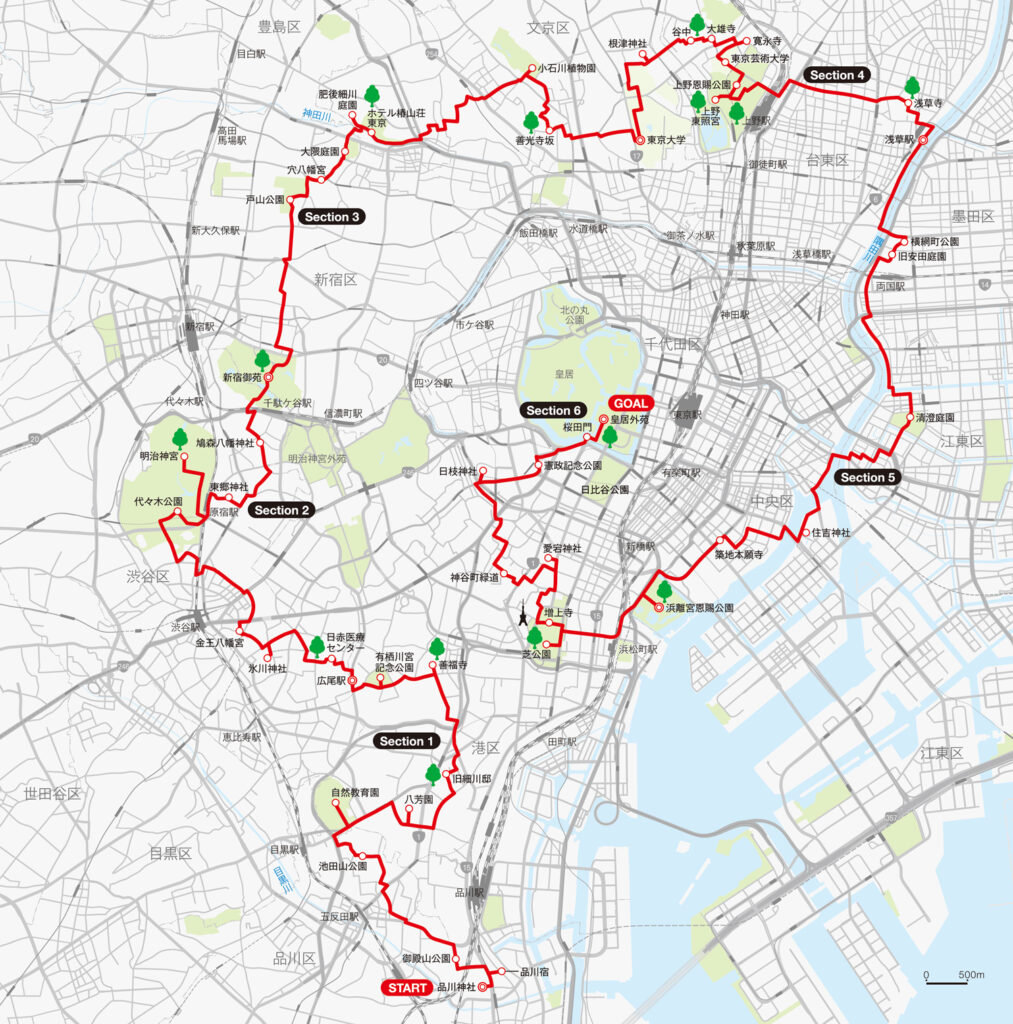First impressions of Tokyo’s vast urban landscape can be overwhelming, often filled with a stereotypical view of the most populated city on earth. But beyond the bright lights, concrete and relentless sounds there’s a green side to the metropolis many have never experienced.
In an attempt to rediscover Tokyo’s green spaces and its trees. Lucas Badtke- Berkow and his wife Kaori, editors of Japanese travel and lifestyle magazine ‘Papersky’, meticulously planned a trail over six months of research and discovery through Tokyo’s unique and ancient trees to reflect its deep cultural history.
The route literally spirals through the city on a 60km course, passing through some of the busiest areas yet remaining calm. Avoiding busy roads where possible, opting for quieter, more idiosyncratic backstreets. The course’s six sections are open to be cycled, hiked or run and can be explored over as many days as you like or dipped into for a single stage depending on how much of Tokyo’s historic and gastronomic culture you want to sample.
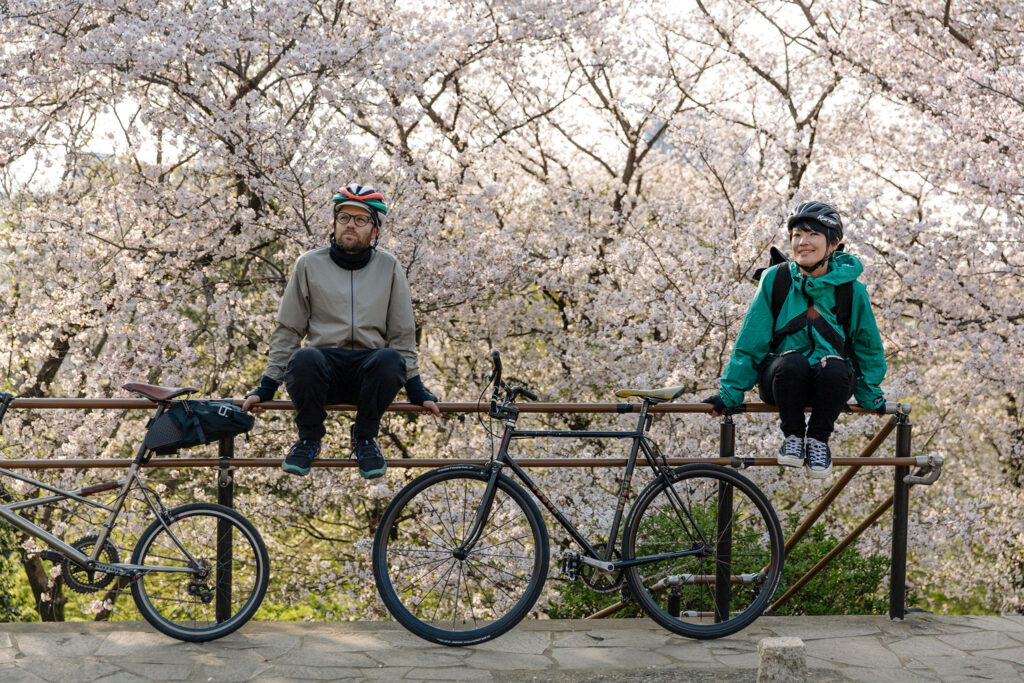
Shinjuku Gyoen to Asakusa
The feeling of the city begins to change away from Shinjuku Gyoen’s Sendagaya Gate towards Toyama Park and Hakone-Yama, the highest ‘manmade-hill’ in Central Tokyo at 44.6m (there’s even a certificate for climbing it). It’s a brief stop here, high amongst the cherry blossom before continuing through the undulating park and on to Ana Hachimangu Shrine, dating back to 1062. Now fully restored, the bight reds and pristine man-made structures create a striking contrast against the natural forms of the trees.
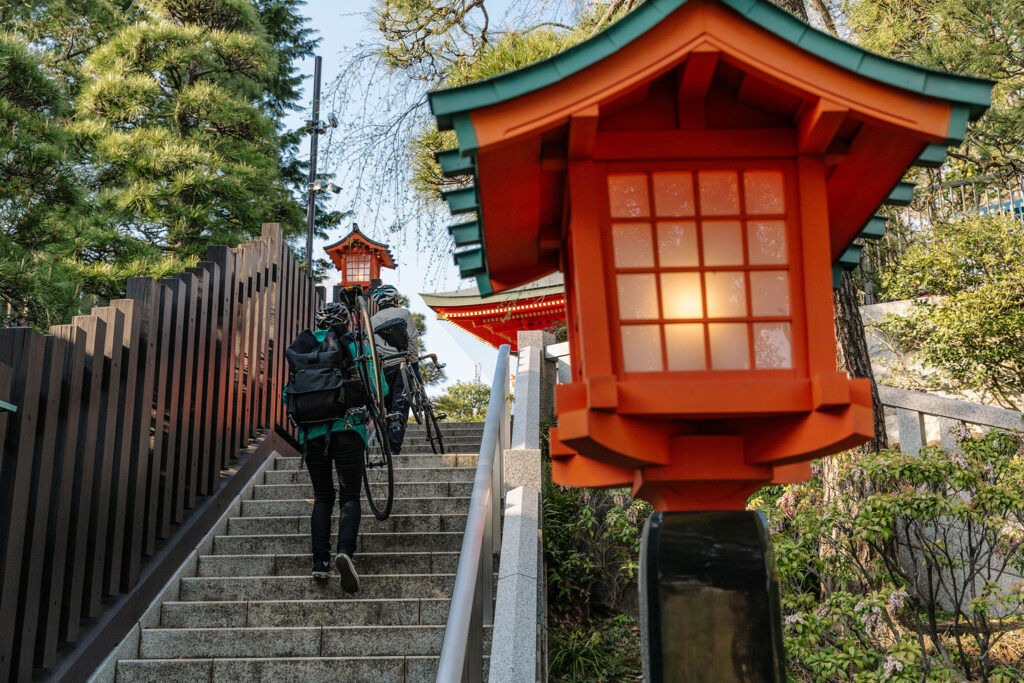
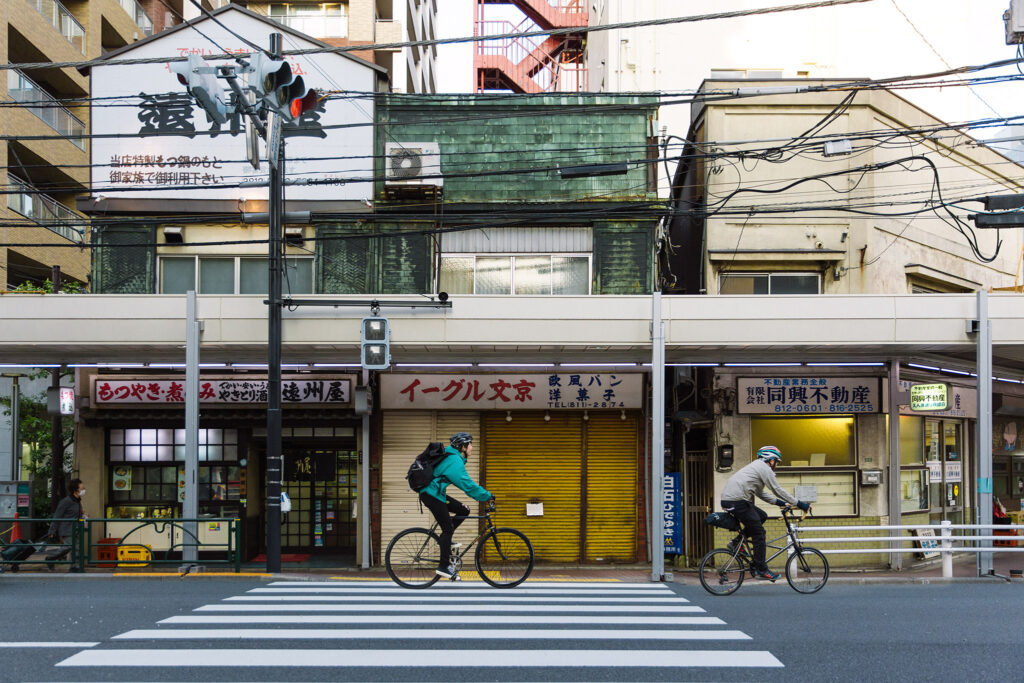
Back on route through the grounds of Waseda University we pass by the Tudor Gothic Ōkuma Memorial Hall, lined with dogwoods, briefly looking into Okuma Gardens before crossing the Kanda River at Komatsuka Bridge. The main route veers right after the bridge, but first we deviate left towards Higo-Hosokawa Garden, once residence for the retainer of the Shogunate. There are winding paths through its tree filled hillside, large pond and traditional gardens.
Further along the river we pass Munatsuki-Hill, immortalized in Haruki Murakami’s Norwegian Wood on the way to Chinzan-sō, now part of a luxury hotel and founded in 1877. Another former samurai residence with historical monuments from across Japan, including a thousand year old pagoda from the Hiroshima mountains. The landscape is filled with many trees and plants, a waterfall and natural spring among a 500 year old chinquapin and ginkgo said to be over 300 years old. The route continues along the Kanda River promenade alongside Edogawa Park, flooded with cherry blossom during March and April, eventually zig zagging through quiet residential streets with steep climbs on the typically Japanese donut-roads designed for traction in harsh weather.
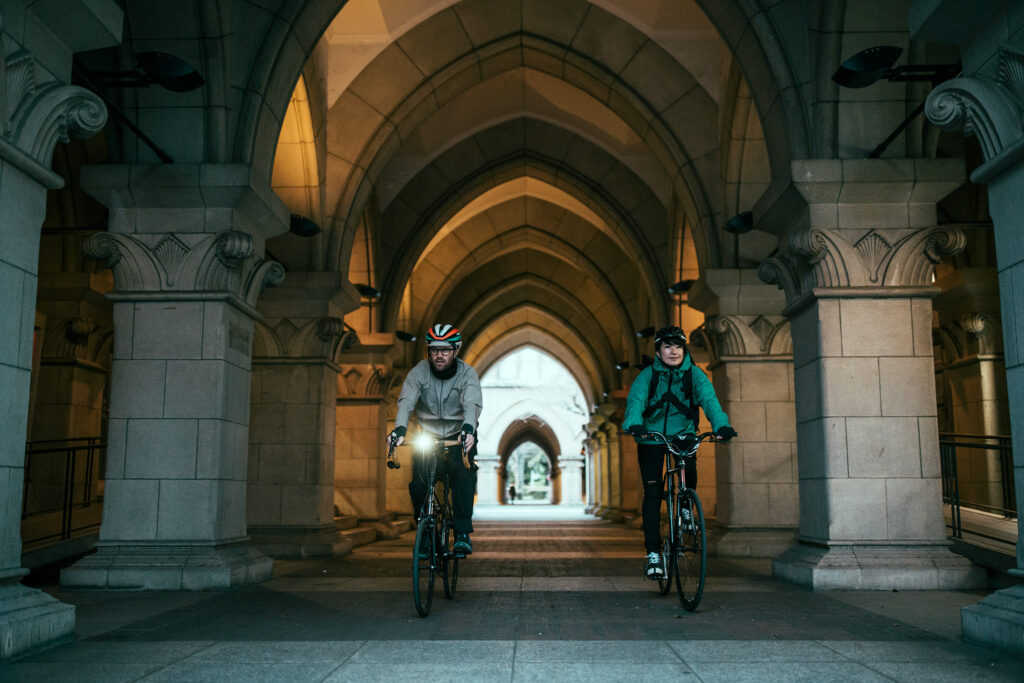
Koishikawa, the botanical garden of the University of Tokyo is the birthplace of modern botanical science in Japan. Its herb garden was established by the Tokugawa Shogunate in 1684, and is home to a huge variety of 4,000 species, including giant camphor, cedar, meta-sequoia and a descendant of Isaac Newton’s apple tree among many historic plants and ruins. Its hillside forest dates back over 300 years and feels more like a mountain path in the centre of Tokyo.
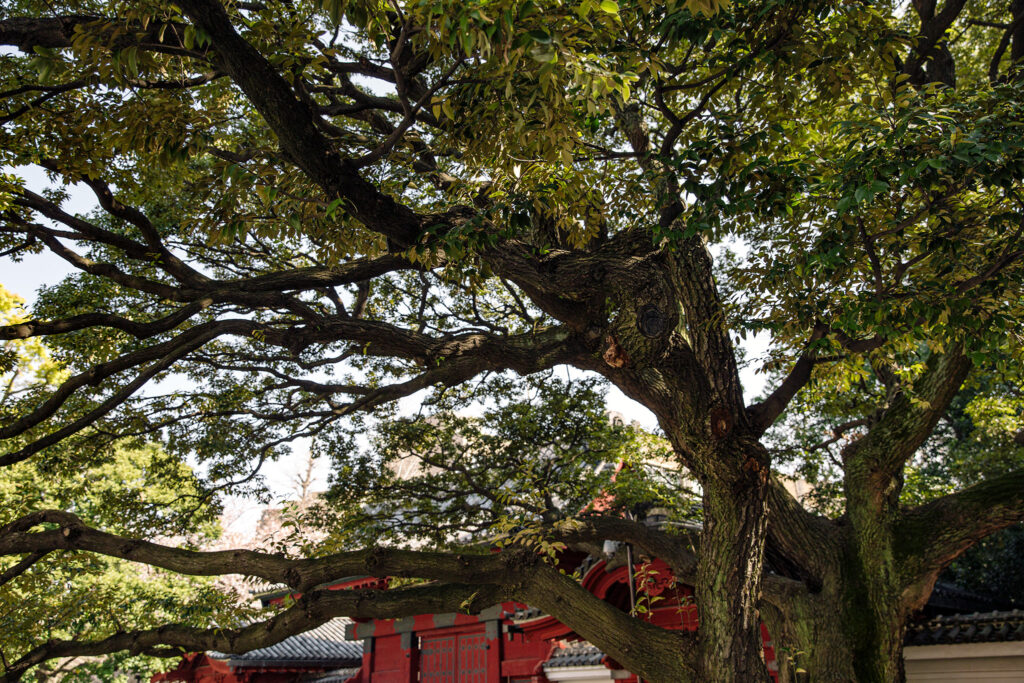
A few kilometers further on we reach the university campus, entering the historic Akamon Gate, riding along the famous ginkgo lined avenue through old gothic arches leading to the 300 year old ginkgo-biloba adjacent to the Faculty of Engineering. Outside the university grounds we immediately get off the busy high street and on to some more peaceful, tree filled roads leading on to the Nezu Shrine, where prestigious samurai residences make way for a more humble area of the city. Developing around the shrine during the Edo period, old wooden houses and narrow alleys remain, creating a unique downtown culture the great writers of the Meiji era were fascinated by — Soseki Natsume, Ogai Mori and Yasunari Kawabata all spent time here. As we pass through the streets there’s more of a sense of life, with clothes drying and plants and small trees everywhere curated by residents. We pass a striking 20m Himalayan cedar in the Yanaka area, marking a fork in the road next to Mikado Bakery which began life as a small potted plant over a 100 years ago.
Towards Ueno Park, the nostalgic scenery begins to transition to an area where nature and culture intersect. During the Meiji era many of Japan’s leading cultural institutions were built when this area developed as a centre for modernization: galleries, museums, concert halls, and the National Museum of Western Art designed by Le Corbusier. Along the outside of Tokyo University of the Arts they are currently replacing iron fences with over 40 varieties of plants to create a softer Geidai Hedge. Ueno Park is huge, with many of these institutions located within its grounds, or around the periphery. Within the park, the kusunoki tree of Toshogu Shrine now more than 600 years old, survived multiple earthquakes and the bombings of WWII. It was here before the shrine was built in 1651 and is among many historic trees including the hinoki planted by President Ulysses S. Grant on his visit in 1879.
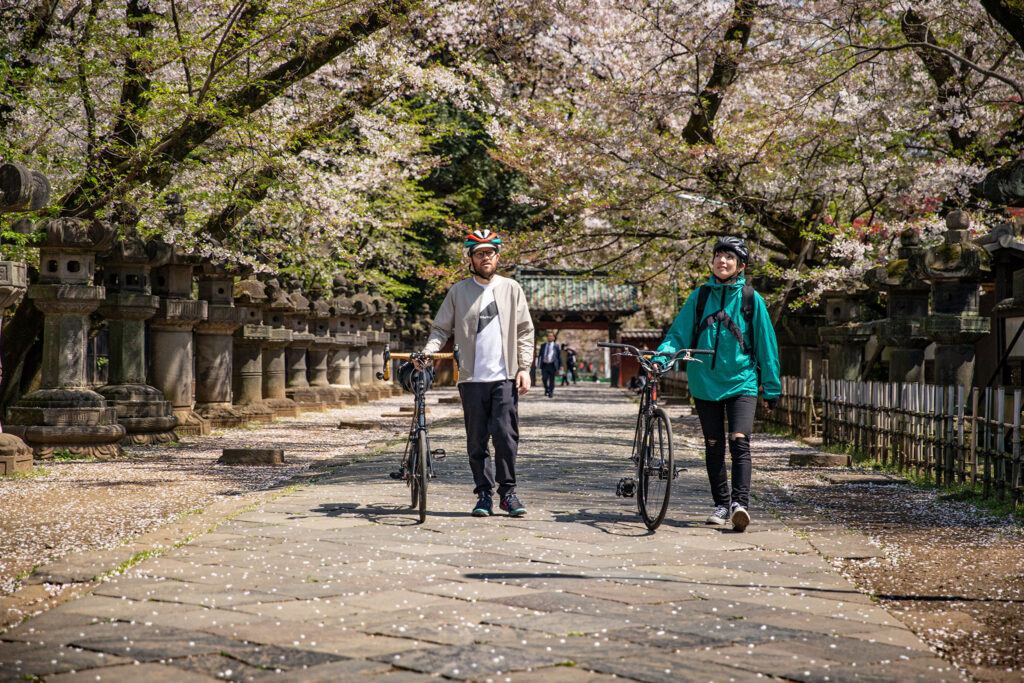
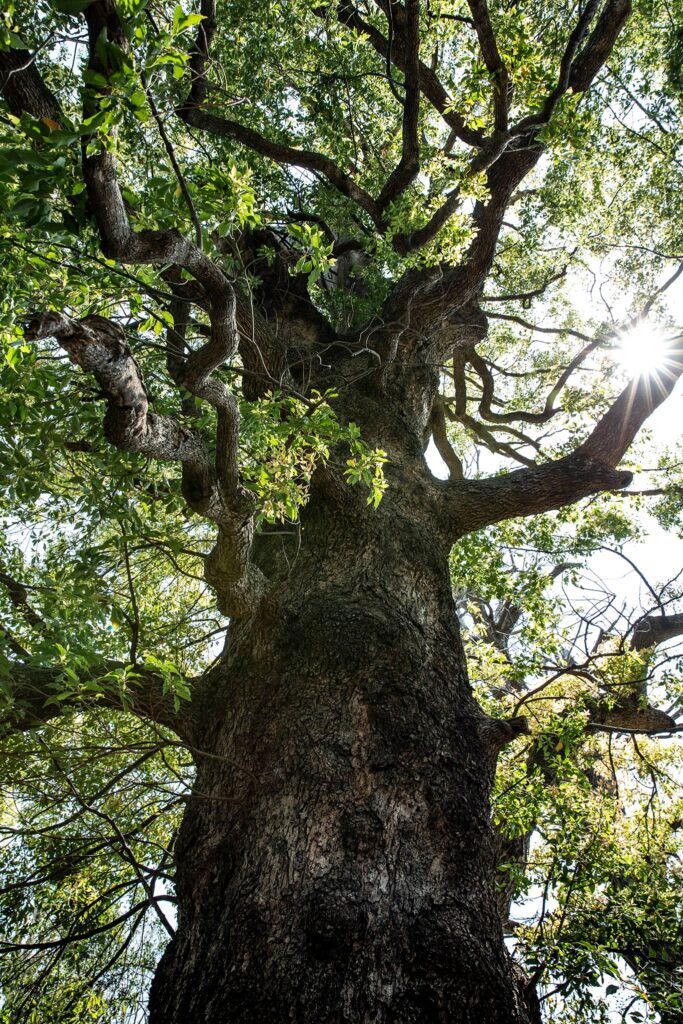
We picked up some local senbei, baked in a small store just outside the park, where there are many great options for lunch, including Hagiso Café & Gallery (also a good place to stay), with a music playlist curated by artists and food using local ingredients.
A few kilometers further marks the end of Section Four. Senso-ji Temple in Asakusa the heart of downtown Tokyo, built in 645AD and the oldest temple in the city. There are glimpses of Tokyo Skytree between buildings at various points along the route which avoids the crowded shopping streets of Nakamise-dori which often makes cycling impossible.
Much of the area was destroyed by the firebombing of the second world war, including the temple itself. As part of the rebuilding and a symbol of the city’s rebirth is an 800-year-old ginkgo-biloba in the temple’s courtyard, once thought to have been destroyed, it regrew from the scared husk of the old tree which can still be seen today.
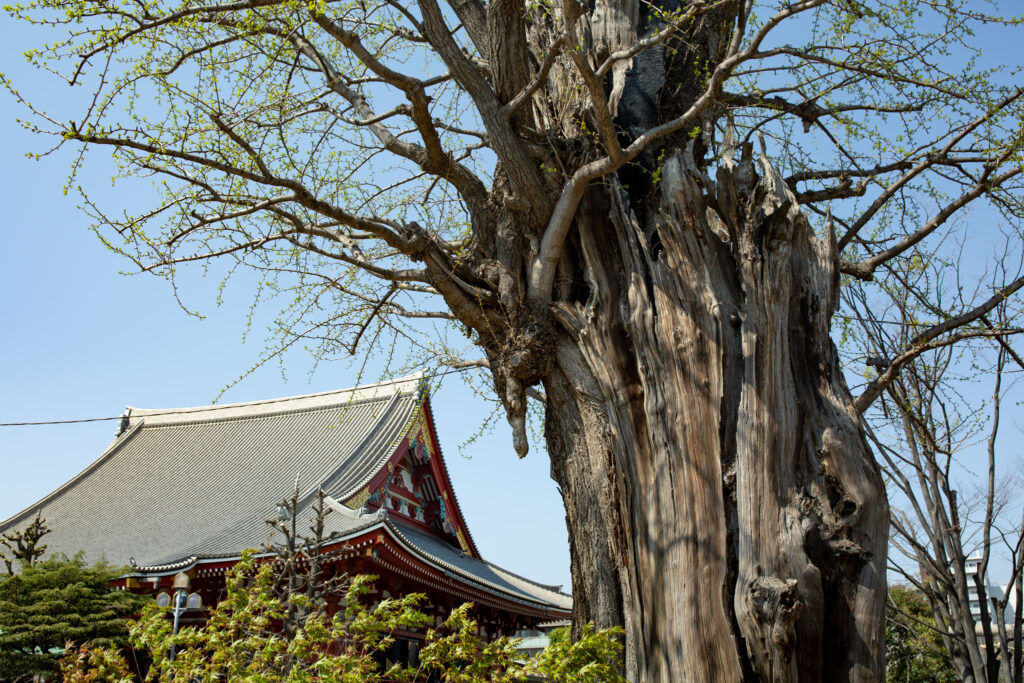
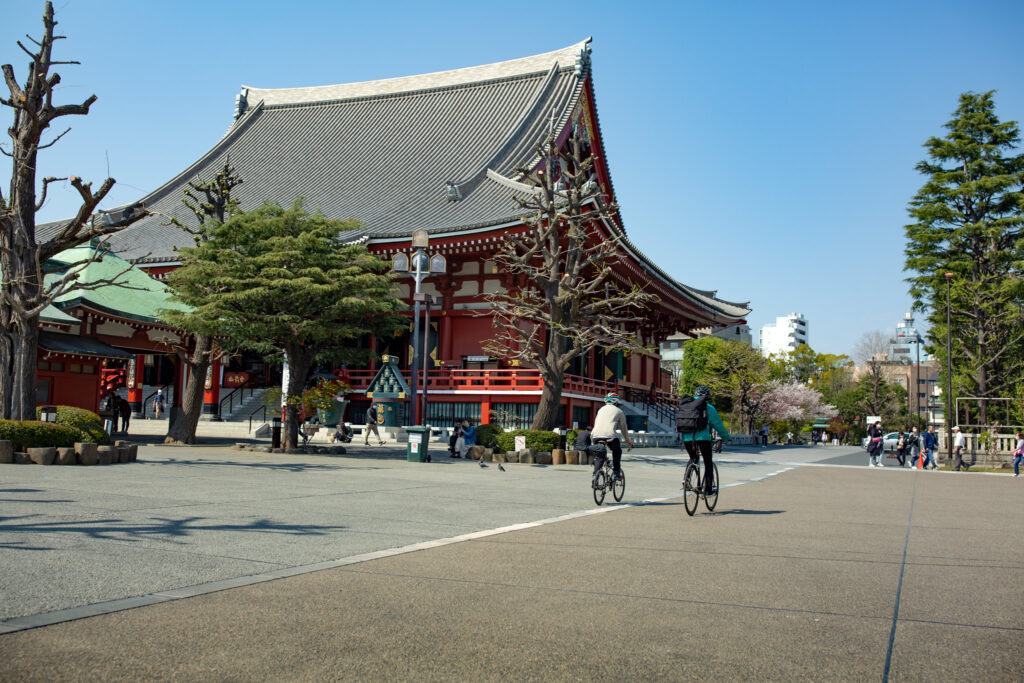
Read about all six sections of the Tokyo Tree Trek:
・Sections 1&2 Kita Shinagawa to Shinjuku Gyoen
・Sections 3&4 Shinjuku Gyoen to Asakusa
・Sections 5&6 Asakusa to Tokyo Imperial Palace
PAPERSKY has created a 60km trail that connects trees in Tokyo. This original route starts from Shinagawa-juku (Kita-Shinagawa), which welcomed travelers as the gateway to Edo (old name for Tokyo), and winds around in a clockwise direction to the Imperial Palace, where Edo Castle once stood.
